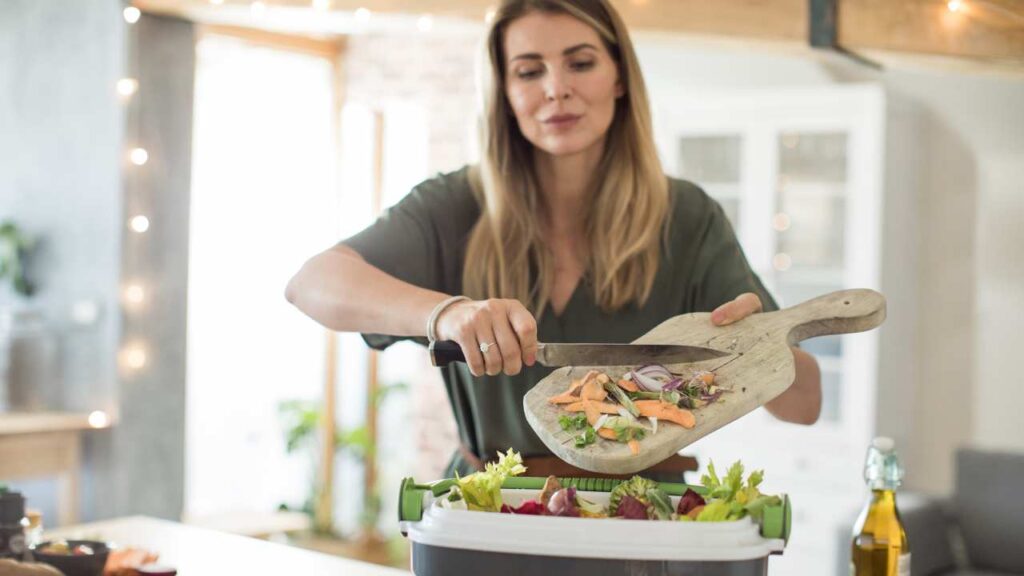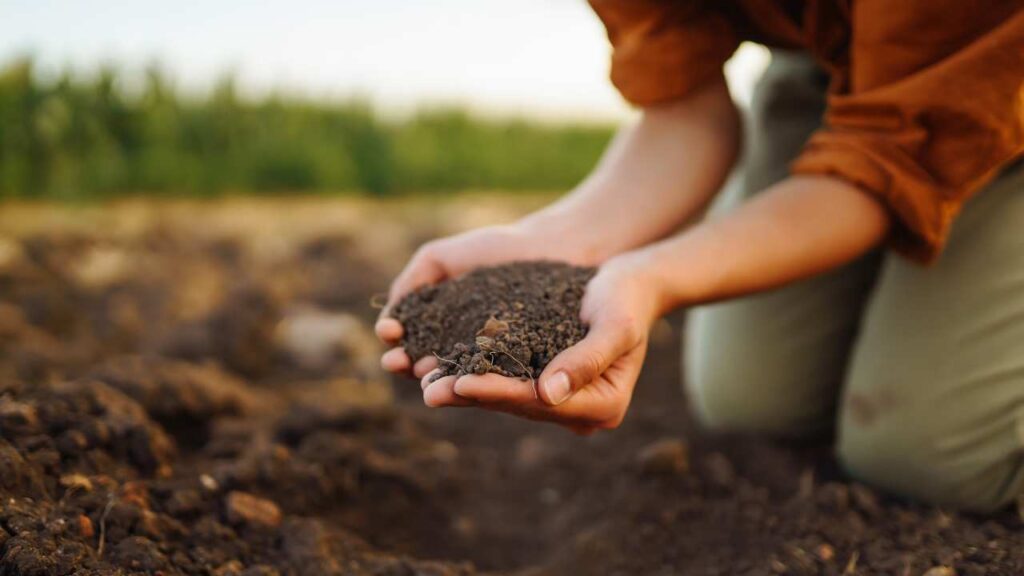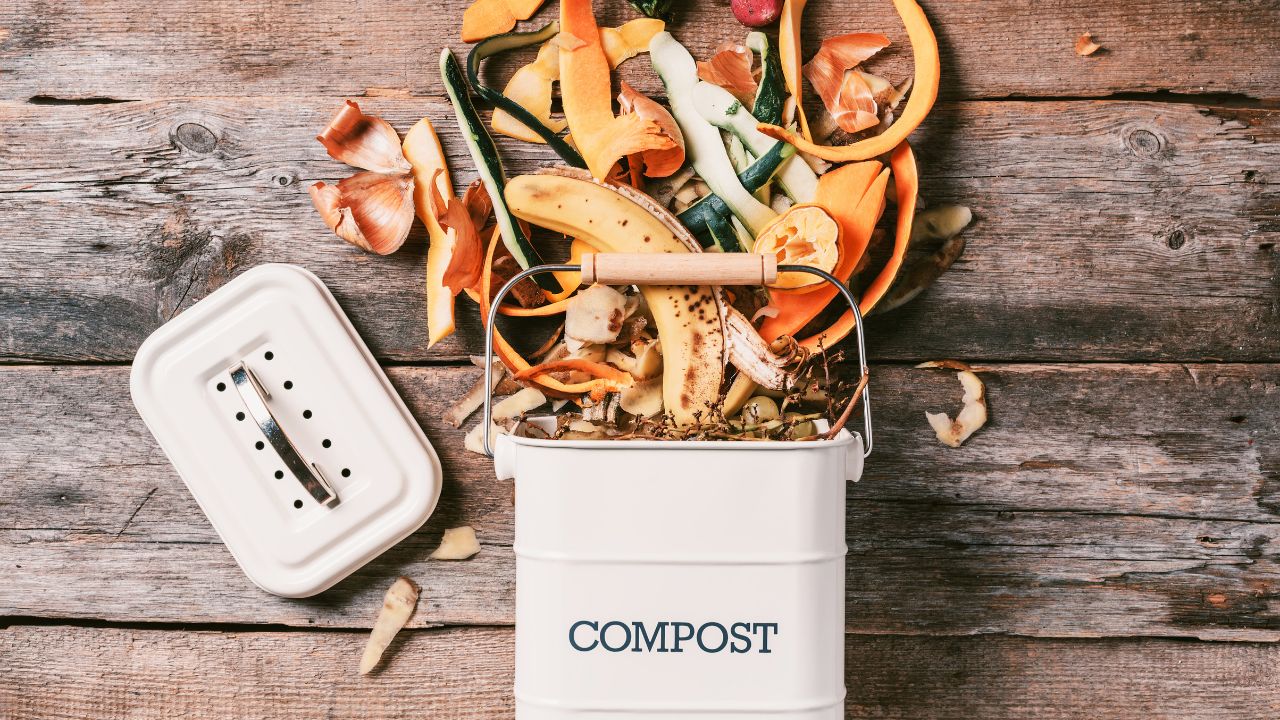How to Make Electric Kitchen Composter?
To make an electric kitchen composter, obtain a plastic bin, drill holes for aeration, add food scraps, carbon-rich materials, and a Bokashi bran, cover with a lid, and turn on the composter.
Making your own electric kitchen composter can be a sustainable way to reduce food waste in your household while creating nutrient-rich compost for your garden.
With a few simple steps and materials, you can easily set up a composting system that helps the environment and improves the health of your plants.
This DIY project is a great way to promote eco-friendly living and harness the power of composting right in your own kitchen.
Choosing The Right Materials

When it comes to building an electric kitchen composter, choosing the right materials is crucial for its effectiveness.
From suitable containers to insulation materials, every component plays a vital role in the composting process.
Let’s delve into the key considerations for selecting the appropriate materials.
Suitable Containers
Suitable containers are essential for creating an efficient electric kitchen composter.
The container should be airtight and made from durable materials like stainless steel or food-grade plastic.
Additionally, ensure the chosen container is spacious enough to accommodate the composting materials while fitting seamlessly into your kitchen’s design and layout.
Insulation Materials
Insulation materials are crucial for maintaining the optimal temperature within the composter.
Choose materials such as foam insulation or reflective insulation sheets to retain heat effectively.
Proper insulation will facilitate the decomposition process and ensure that the compost reaches the ideal temperature for breaking down organic matter efficiently.
Make sure to select insulation materials that are durable and suitable for an electric composter.
Setting Up The Composting System
Before starting, choose a container that fits your kitchen space.
Ensure the container has a lid to keep odors contained.
- Select a plastic bin or metal container.
- The container should be easy to open for adding kitchen scraps.
Begin by adding a layer of soil or compost to the bottom of the container.
- Collect kitchen scraps like fruit peels and coffee grounds.
- Alternate between green materials (kitchen scraps) and brown materials (leaves or paper).

Mix the layers to help aerate the compost.
Keep the compost moist like a wrung-out sponge.
Monitor the temperature to ensure it stays between 90-140°F.
| Moisture Level | Temperature Range |
|---|---|
| 50-60% | 90-140°F |
Powering The Composter
Powering the Composter:
Solar Powered Option
If you want an eco-friendly solution, consider opting for solar-panel powered kitchen composting.
Harness the sun’s energy to sustainably power your composting process.
Battery Powered Option
For a more flexible approach, you can choose a battery-powered electric kitchen composter.
Ensure you have rechargeable batteries for efficient composting functionality.
Monitoring And Troubleshooting
Monitor and troubleshoot your electric kitchen composter with these simple steps.
Ensure optimal performance and resolve any issues efficiently.
Monitoring and Troubleshooting the Electric Kitchen Composter is essential to ensure smooth and efficient composting.
By regularly checking the composting progress, dealing with odor issues, and preventing pest infestations, you can maintain a healthy and productive composting process.
Checking the Composting Progress
To monitor the composting progress of your electric kitchen composter, there are a few key indicators to keep an eye on.
You can assess the temperature inside the composter using the built-in thermometer or an external one.
Additionally, inspect the moisture level by feeling the compost material for dampness.
Keep track of the decomposition of the organic matter and note any unusual changes in color or texture.
Dealing with Odor Issues
Eliminating unpleasant odors from the electric kitchen composter is crucial for a pleasant composting experience.
Ensure the composter is properly aerated to prevent anaerobic decomposition, which can lead to foul odors.
Balance the carbon and nitrogen ratio by adding more dry, brown materials if the compost smells overly pungent.
Regularly clean the composter and its components to avoid the buildup of rotting organic matter, which can cause persistent odors.
Preventing Pest Infestations
To prevent pest infestations in your electric kitchen composter, it’s important to secure the composter with a tight-fitting lid or cover.
Regularly inspect the composter for any signs of pests such as fruit flies, ants, or rodents.
If pests are present, address the issue by adjusting the compost mix, adding pest-deterring ingredients like citrus peels or coffee grounds, and ensuring the composter remains sealed and impenetrable to unwanted visitors.
By actively monitoring the composting progress and promptly addressing any odor or pest issues, you can maintain a healthy and efficient electric kitchen composter, ultimately yielding nutrient-rich compost for your garden.
Harvesting And Using Compost
Learn how to create an electric kitchen composter for efficient composting and sustainable gardening.

This innovative solution makes the process seamless, allowing you to harvest and use compost with ease.
Say goodbye to traditional methods and welcome an eco-friendly, time-saving approach to composting.
Determining When The Compost Is Ready
Determining when the compost is ready can be an exciting moment for any gardener.
Before harvesting and using the compost, it is essential to make sure it has fully decomposed and transformed into rich, dark, and crumbly material that is beneficial for your plants.
Here are a few indicators to help you determine if your compost is ready to be harvested:
- Check the temperature: A properly functioning compost pile will generate heat during the decomposition process. When the temperature starts to decrease and stabilizes at or near the ambient temperature, it indicates that the composting process is complete.
- Look for a rich, earthy smell: Compost that is ready to be used will have a pleasant, earthy smell. Foul or ammonia-like odors indicate that the composting process is not finished yet.
- Check for a uniform texture: Fully decomposed compost will have a uniform texture throughout. It should be free of recognizable chunks or materials that have not completely broken down.
- Perform the squeeze test: When you squeeze a handful of compost, it should be moist but not overly wet. Excess moisture may indicate that the compost needs more time to dry out and further decompose.
Harvesting And Storing Compost
Once you have determined that your compost is ready, it is time to harvest and store it properly.
Follow these steps to ensure that your compost stays fresh and beneficial:
- Using a garden fork or shovel, start harvesting the compost from the bottom of the pile or bin. Remove the finished compost while leaving the unfinished compost materials for further decomposition.
- Transfer the harvested compost into a designated storage area or container. This can be a bin, a compost tumbler, or even heavy-duty garbage bags with air holes punched in them.
- Store the compost in a cool, dry place away from direct sunlight. This will help maintain its moisture content and prevent it from overheating or drying out.
- Periodically check the moisture level of the stored compost. If it feels too dry, moisten it slightly with water. If it becomes too wet, turn it to increase airflow and promote drying.
Using Compost In The Kitchen Garden
Now that you have harvested and stored your compost successfully, it’s time to put it to use in your kitchen garden.
Here are some ways you can utilize the benefits of compost:
- Amend planting holes: Dig a hole for each plant and mix compost into the soil. This provides a nutrient-rich environment and improves the soil’s structure, drainage, and moisture-holding capacity.
- Top dress your garden beds: Spread a layer of compost on top of your garden beds, gently raking it into the soil. This helps promote healthier plant growth, suppresses weeds, and conserves soil moisture.
- Create compost tea: Make a nutrient-rich liquid fertilizer by steeping compost in water. Use this compost tea to water your plants and provide them with an extra boost of nutrients.
- Make potting mix: Mix compost with other organic materials like peat moss and perlite to create a homemade potting mix for container plants. This helps retain moisture and provides essential nutrients.

Frequently Asked Questions On How To Make Electric Kitchen Composter
How Can I Make An Electric Kitchen Composter?
To make an electric kitchen composter, gather materials like a food processor, bucket, and a motor.
Follow easy steps for assembling and wiring the composter.
What Are The Benefits Of An Electric Kitchen Composter?
An electric kitchen composter helps reduce waste, converts food scraps into nutrient-rich compost, and promotes sustainable gardening.
How Much Does It Cost To Build An Electric Kitchen Composter?
The cost of building an electric kitchen composter varies, but you can create one with materials you may already have, saving you money.
Can I Use An Electric Kitchen Composter In A Small Apartment?
Yes, an electric kitchen composter is suitable for small apartments as it requires minimal space and operates without producing unpleasant odors.
What Can I Compost In An Electric Kitchen Composter?
You can compost various organic materials like fruit and vegetable scraps, coffee grounds, eggshells, and yard waste in an electric kitchen composter.
How Long Does It Take For The Composting Process In An Electric Kitchen Composter?
The composting process in an electric kitchen composter can take around 2 to 4 weeks, depending on the materials used and the composting conditions.
Is An Electric Kitchen Composter Environmentally Friendly?
Yes, an electric kitchen composter is environmentally friendly as it reduces waste, avoids the need for chemical fertilizers, and promotes sustainable practices.
Can I Use The Compost From An Electric Kitchen Composter In My Garden?
Absolutely! The compost produced by an electric kitchen composter is rich in nutrients and can be used to enhance the health of your garden soil.
Does An Electric Kitchen Composter Require Maintenance?
An electric kitchen composter requires minimal maintenance such as occasional cleaning, checking the wiring connections, and ensuring proper airflow.
Are There Any Safety Precautions When Using An Electric Kitchen Composter?
When using an electric kitchen composter, it’s essential to follow electrical safety guidelines, avoid overloading the motor, and keep it away from water sources.
Conclusion
Creating an electric kitchen composter is an innovative and eco-friendly solution.
By following the steps outlined in the post, you can reduce food waste and contribute to a more sustainable environment.
With a little effort and creativity, you can make a positive impact on both your kitchen and the planet.

